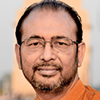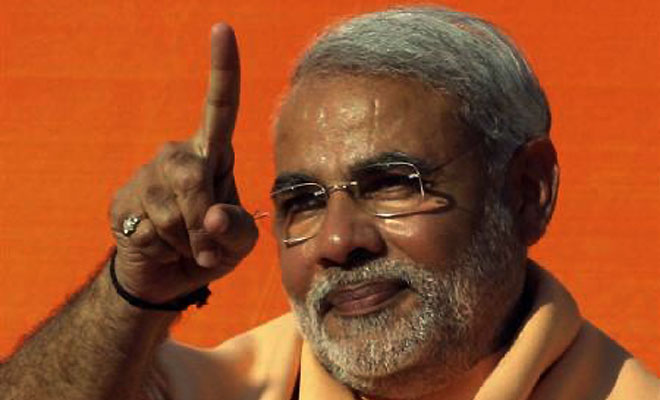Gujarat CM breaks the Nehruvian template of a national leader, and nobody is sure if such a persona can deliver in 2014
What is it about Narendra Modi that any development related to him is either preceded or followed by a huge controversy? That this is true was acknowledged even by him in an interview with me. He had said, “Whatever Narendra Modi does – either then or even now, those who want to create a controversy generate one.” Then he had blamed the media and his political detractors as he was speaking about the situation after the 2002 Gujarat riots.
But this time the hullabaloo in the Bharatiya Janata Party (BJP) was over Modi’s appointment as chief of the party’s campaign committee. The decision, announced on a sodden Sunday in Goa, was preceded by frenzied anticipation of the elevation and was given the name of the Biblical sounding ‘anointment’ by an imaginative scribe only to have others zeroing in on the word. This was followed by veteran LK Advani’s public bawl that had party leaders huddling together, TV channels getting another opportunity to go ballistic and for the Congress to show again the virtual absence of steel.
Since December when BJP won the assembly elections in Gujarat, it was a foregone conclusion that Modi would be given a bigger role in the party. The only points of speculations were his precise responsibility and the timing of the appointment. The inevitability of Modi’s greater role in central politics became clearer when Nitin Gadkari was refused a second term as party president and Rajnath Singh was appointed in his place.
There were expectations that Modi’s elevation would be accompanied at least – if not preceded by – a change of stance on his two most controversial characteristics: polariser to the core and authoritarian leader even among peers. In the past six months this has not happened and he remains what he was – quintessential Modi. Because, he feels that if he becomes accommodative towards religious minorities and partakes in ritual tokenism like other leaders, he will lose his unique identity. Modi also considers that any public display of accommodation towards other leaders would be seen poorly by his core constituency, who are drawn to him because of his brute decisiveness. Modi thinks that India is ready for a quasi-dictatorial leader who delegates tasks instead of seeking participation in decision making.
The reason why controversy hogs Modi is because he is completely different from other BJP leaders. He is different in terms of personal temperament and a distinct political orientation. At a personal level, Modi remains committed to the work-style of the Rashtriya Swayamsevak Sangh (RSS) which follows a top-down approach, unlike the BJP which in the post-1990s broad-based the working style introducing a greater amount of internal discussion compared to the Jana Sangh days. But Modi has run the Gujarat unit and the state government on the ‘I, me, myself’ model in which others are only implementers or facilitators. In any future position that Modi may hold, he has not indicated willingness to change his working style. For leaders in the BJP, this autocratic style of working has been a downer – especially for those not willing to be part of his bandwagon.
Political orientation unsettling
But, more than Modi’s authoritarian style, it is his political orientation that has unsettled peers in the party. Beyond doubt, Modi is the first mainstream political leader who has completely broken from the stereotype of a political leader cast in the Nehruvian mould who carries along every section and community, especially underprivileged and religious minorities. Very consistently, in the years since 2002, Modi has taken the BJP into political territories where even Atal Bihari Vajpayee and Advani did not tread. Even in his heydays as the original polariser, Advani sugar-coated venom in a language that aimed to convert the intelligentsia first and the masses later. In contrast, Modi’s approach was that the masses needed to be wooed first and the intelligentsia would follow in search of relevance.
There were four cornerstones of the mould cast by Nehru on how the political leader of India should look like. First and foremost was a commitment to democratic functioning. Secondly, adherence to a secular India and not a mirror of Pakistan – a nation that every community could call home and where minorities were carried along whenever they needed assistance. Thirdly, Nehru spelt out that a true leader must believe in the idea of a welfare state where distribution accompanied growth. For the first four decades after independence pursuit of non-alignment formed the final element of the Nehruvian characteristics of a leader – but this fell by the wayside after the end of Cold War.
Lal Bahadur Shastri and Indira Gandhi picked up the baton from Nehru. Under Morarji Desai and VP Singh – the first two non-Congress prime ministers of India, the state’s pursuit of secular policies was given a wider dimension with introduction of social justice or caste-based reservations for other backward classes (OBCs). The other two non-Congress and non-BJP PMs – HD Deve Gowda and IK Gujral also remained cast in the Nehruvian mould as administrators. Modifications were ushered in by PV Narasimha Rao with Manmohan Singh as his chief economic architect, but the PM did not completely break from the past.
'Resurrection' of Vajpayee
Though the BJP grew 60 times in the Lok Sabha between 1984 and 1991, Advani made way for Vajpayee in 1995 because the leadership knew the limitations of Hindutva-driven politics. Leaders of the Sangh Parivar felt that the aggressive Hindutva would not enable BJP to make further electoral inroads and draw electoral allies – either before elections or afterwards. Vajpayee was thus resurrected.
On assuming charge, Vajpayee committed his party to a “non-sectarian administration in which there is no discrimination against caste or creed”. Even after he became PM in 1996, Vajpayee said that the Ram temple would be built “within the dictates of law”. Later in 1998 when the ‘national agenda of governance’ was drawn up, it made no mention of the three most contentious positions of the BJP: Ayodhya, abrogation of Article 370 and introduction of a uniform civil code. Despite Gujarat, Vajpayee remained within the Nehruvian mould and when NDA lost in 2004, Vajpayee did not bow out on charges of communalism.
Despite leading the Ayodhya agitation, Advani moderated his stance – after he donned the mantle following the 2004 defeat and he made the infamous Jinnah blooper. As late as March this year he said there was need to change the “mutual equation between the BJP and the minorities” and that the “BJP must take the initiative in this direction by including a charter of commitments to the minorities”. By and large most leaders in the BJP acquiesced with the soft ‘let’s take everyone along’ approach.
In contrast, Modi
Modi, however, has broken from this mould and does not believe in the politics of goodwill gestures. Modi opted to be a full-fledged practising-Hindutva leader within moments of the Godhra carnage. True, Modi since the 2007 victory consciously projected the ‘development man’ persona. But it was to add variety – the ‘demolition man image’ was never negated.
Such a political projection by Modi has unsettled most BJP leaders and this explains why there was so much dithering within the party over a preeminent position for him. Entering the electoral fray on Modi’s plank in the entire country is different from using the same tack in a traditionally communally polarised state like Gujarat.
The BJP was virtually co-opted into the system of governance and is no longer the party with a difference that its leaders claimed. The BJP has become another Congress albeit of a different hue and leaders have been complacent that they will eventually get their turn. Modi with his majoritarian approach threatens this comfort level. He wishes to take greater risks because Modi thinks the yields will be greater. The pressure from below was the reason for his appointment. But, no one – except Modi – is sure if this pressure will correspond with the mood of the electorate. This is the main reason for turbulence within BJP.
(Mukhopadhyay is a veteran journalist with a biography of Narendra Modi to his credit)

